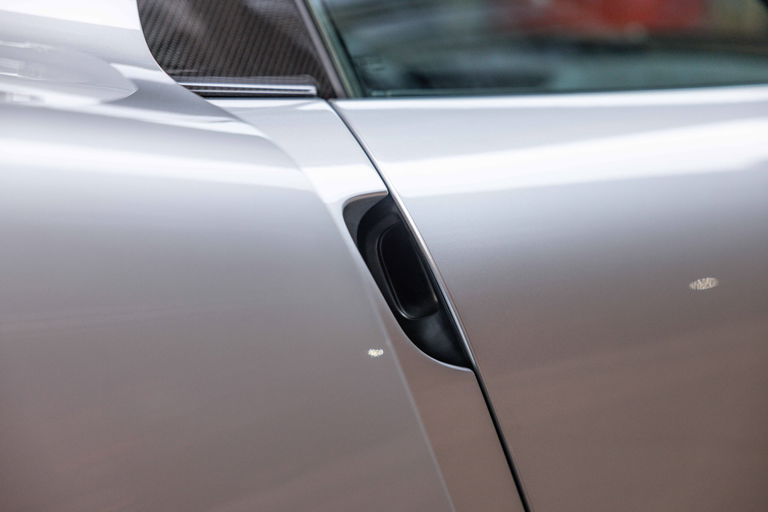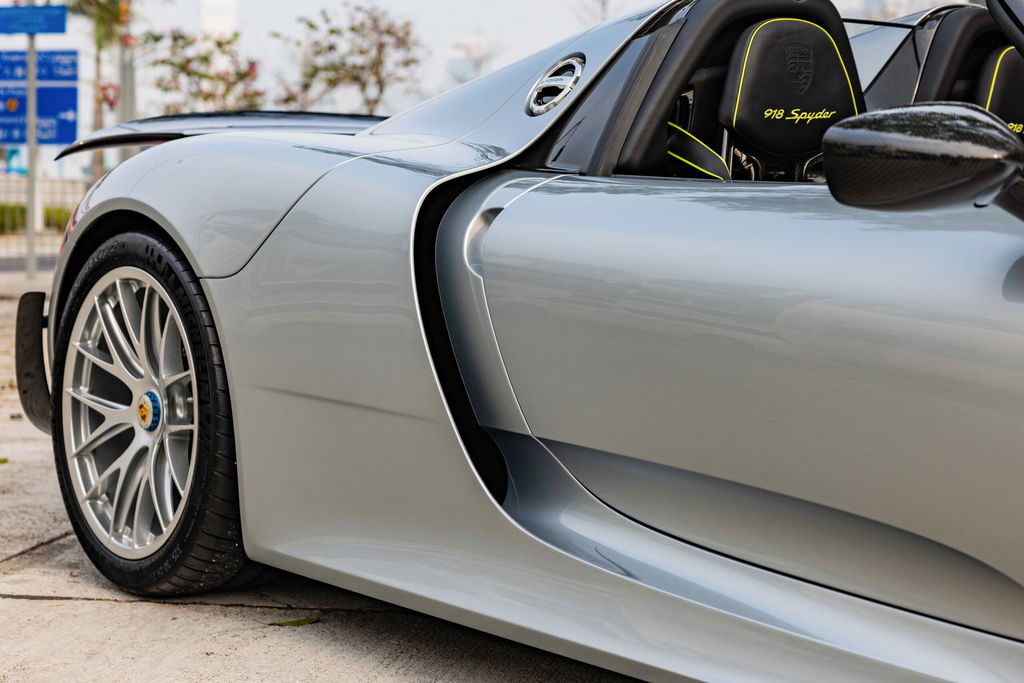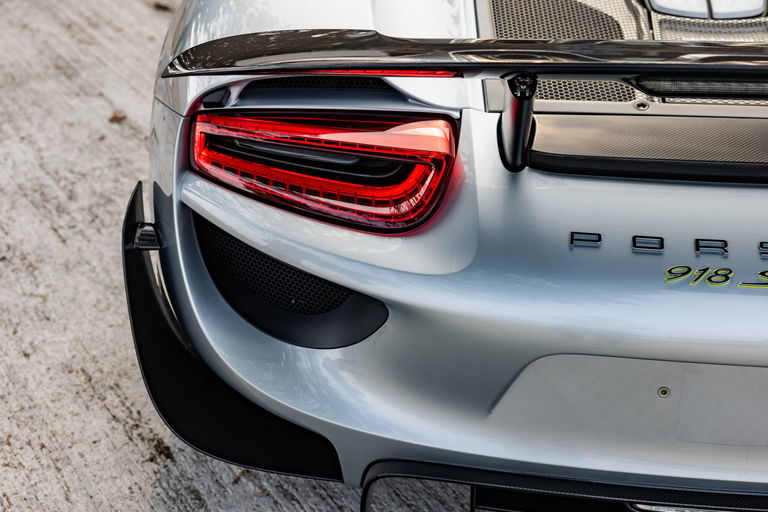For Porsche, creating an automobile to succeed the Carrera GT would be no easy feat. As it had been a car that pushed the envelope of performance and stood head and shoulders above the rest of Porsche’s model range at the time, while being a unique offering in the company’s history, any successor would need to do just the same, albeit with a new set of rivals from their respective manufacturers looking to outperform the rest.
Enter the Porsche 918 Spyder. Boasting a mid-mounted 608 brake-horsepower, 4.6-litre four-cam V-8 at its heart, it features dry-sump lubrication, direct injection, variable camshaft timing (Variocam), no external ancillary drive belts, and an Iconel exhaust system that exits between the cylinder banks at the top of the engine. However, the performance did not stop there, and this conventional powertrain is further assisted by two electric motors, producing 279 brake horsepower, making for a total hybrid output of 887 brake horsepower. The electric motors worked in conjunction with the combustion engine to provide seamless, relentless performance, making for a truly electrifying driving experience.
With power being sent to all four wheels, the 918 Spyder can reach 100 km/h from a standstill in just over two seconds, leading into a top speed of well over 320 km/h. The car’s carbon-fiber rear wing and innovative aerodynamics help to keep the car planted at speed, delivering much needed stability as the speed increases. A regenerative braking system works to further capture energy and feed it back to the car’s battery pack.
For those looking to take their car’s performance even further, buyers could opt for the Weissach package. Adding $80,000 USD to the 918 Spyder’s retail price, this package sought to reduce as much weight as possible from the 918 Spyder by fitting magnesium alloy center-lock wheels, fire-resistant fabric, and six-point harnesses. These efforts saved an additional 45 kg from the car’s curb weight.
According to Palawan Press’s Porsche 918 Spyder book, only four 918 Spyders were originally built to Hong Kong specifications, including serial number 513. Finished in Rhodium Silver Metallic over a Black leather interior with Acid Green details, it was further equipped with front-end lift, fire extinguisher, air conditioning, Burmester sound system, vehicle tracking system with Porsche Car Connect, standard door panels, and seatbelts in Acid Green in addition to the Weissach package. The Weissach package was specifically selected by the current owner when ordering, as he was told by Porsche in Germany when configurating his car that the Weissach package would only be equipped to 25% of 918 Spyder production.
Since delivery to its first and only owner in late 2015, the car has remained in static, climate-controlled storage and has never been registered for use on the road. As a result, it presents in virtually as-new condition throughout, having been driven less than 70 km from new. Following a service in July of 2022 at 38 km, the 918’s high-voltage battery was replaced in January 2024, with all work being carried out by Porsche Centre Hong Kong. A fault-finding diagnostic test was conducted by Porsche Centre Hong Kong in February 2024, which found no faults with the car itself, or its high-voltage battery.
Perhaps the lowest-mileage unregistered 918 Spyder in existence, this is as close to an ‘as-new’ 918 Spyder one can get, nearly identical to as it was when it left Stuttgart bound for Hong Kong almost ten years ago. Considering its recent inspection from Porsche Centre Hong Kong, it is ready for whatever its next owner has in store and is perhaps the perfect acquisition for that individual who missed out on purchasing a 918 Spyder in 2015.





























































































































